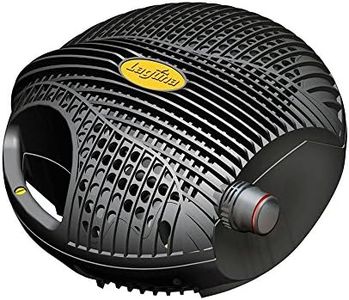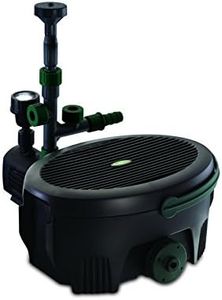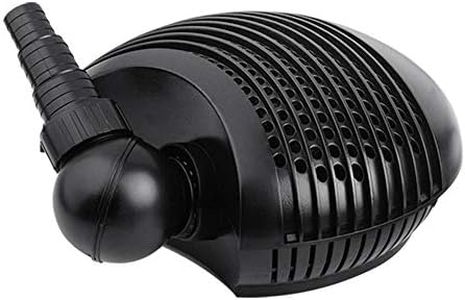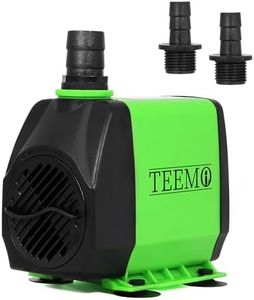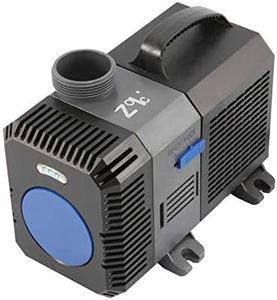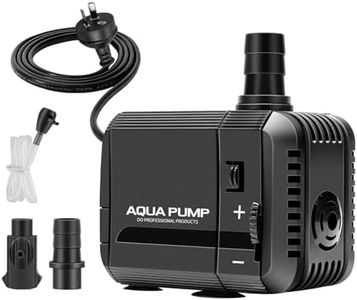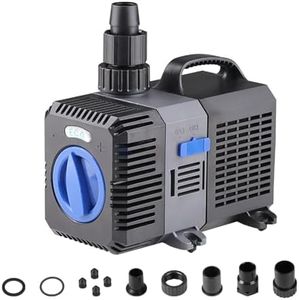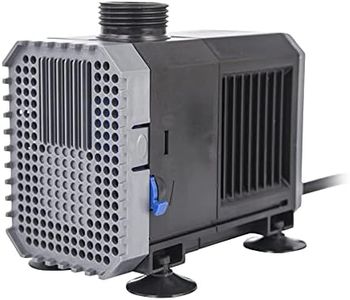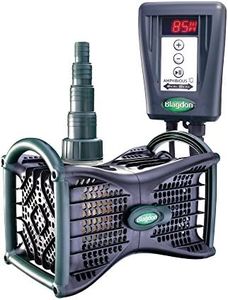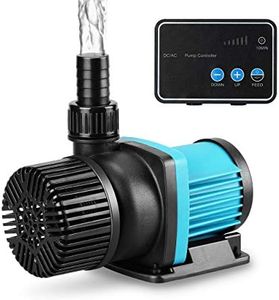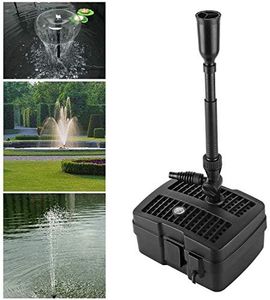We Use CookiesWe use cookies to enhance the security, performance,
functionality and for analytical and promotional activities. By continuing to browse this site you
are agreeing to our privacy policy
10 Best Fountain Pumps
From leading brands and best sellers available on the web.Buying Guide for the Best Fountain Pumps
Choosing a fountain pump can seem overwhelming with so many options available, but by understanding the key specifications, you can easily find a pump that makes your water feature look and sound just the way you want. Before picking a pump, think about the size of your fountain, the height you want the water to reach, and the effect you're aiming for, whether it’s a gentle trickle or a lively spout. The right pump is essential for both aesthetics and maintenance, as it keeps the water moving and helps avoid problems like algae or stagnant smells.Flow Rate (GPH or LPH)Flow rate tells you how much water the pump can move in a given time, usually measured in gallons per hour (GPH) or liters per hour (LPH). This is important because the flow rate determines the strength and height of your fountain’s water stream. Lower flow rates (under 100 GPH) are good for small tabletop fountains or delicate trickles, moderate flow rates (100-500 GPH) suit medium features or small ponds, and higher flow rates (above 500 GPH) work for larger fountains, more dramatic displays, or cascading effects. To pick the right flow rate, consider the volume of your basin and how strong or soft you want the water movement to be.
Maximum Head HeightMaximum head height is how high the pump can push water vertically, which matters if your fountain has tiers or a waterfall. If your fountain’s highest point is three feet above the water, make sure you choose a pump with a head height a bit above that. Pumps with a lower max head (under 3 feet) are for short lifts and simple fountains; mid-range heads (3-5 feet) support tiered or raised fountains; higher heads (5+ feet) are necessary for tall features or strong jets. Match the pump’s max head to your fountain’s design to ensure the water flows as intended.
Pump Size and Power ConsumptionPump size refers to the physical dimensions and the amount of electricity it uses. Larger pumps may be hard to fit into small reservoirs, while smaller pumps work well for compact spaces. Power consumption, measured in watts, affects how much electricity the pump uses. Lower-watt pumps are efficient for modest water features, while bigger pumps use more power but support larger fountains. Choose a size that fits well in your fountain’s basin and a power level that balances performance with efficiency for your needs.
Type (Submersible vs. External)Submersible pumps go directly into the water, making them quieter and easier to install; these are most popular for small or medium fountains. External pumps sit outside the fountain and are often used for large or elaborate water features. If you have a small indoor or balcony fountain, a submersible pump is usually best. For bigger outdoor displays with large water volumes, an external pump might suit you better.
Adjustability and Flow ControlSome pumps come with adjustable flow controls, letting you fine-tune how much water moves through. This is useful if you want to change the fountain’s effect, make it quieter, or adjust it for different seasons. If you like flexibility or want to experiment with different water sounds, look for pumps with a flow control feature. If you just want a basic flow, a fixed-rate pump is fine.
Filter and Maintenance FeaturesGood pumps often come with built-in filters or pre-filters to keep debris from clogging the system. This is important for easy cleaning and the long life of your pump. Fountains placed outdoors collect more dirt and leaves, so strong filtration and easy access for cleaning matter more. If your fountain is indoors or protected, maintenance may be simpler, but a filter still helps. Pick according to how much debris you expect in your fountain.
